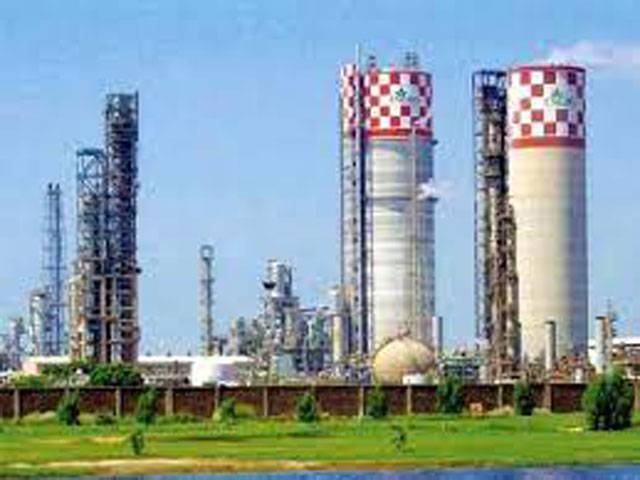ISLAMABAD - High input prices and gas shortage has resulted in negative growth in large-scale manufacturing (LSM) that fell down by 1.19 per cent in the month of October.
The LSM has recorded negative growth of 1.19 percent in October this year over the corresponding period of the previous year. Meanwhile, the LSM has shown growth of 3.56 percent in first four months (July to October) of the current fiscal year, according to the latest data of Pakistan Bureau of Statistics (PBS) released on Thursday.
The industrialists said that LSM has recorded negative growth due to high input prices and shortage of gas. They said that increase in electricity and oil prices in last few months has increased the cost of doing business. The rupee depreciation has also enhanced the troubles for the industries as the imported raw material get expensive. The increase in interest rate could also affect the industrial growth in the months to come. The State Bank of Pakistan (SBP) on Tuesday announced an increase of 100 basis points in the benchmark policy rate, taking it to 9.75 percent.
In last fiscal year, the LSM had shown highest growth of 14.85 percent and the government claimed that slums in industrial production have come to an end. Initially, the LSM had recorded handsome growth in this fiscal year. The LSM growth had slowed down to 1.19 percent in September this year. However, it has gone into negative in October this year due to the multiple factors.
The PBS data of manufacturing activity showed that 11 out of 15 sub-sectors in the LSM rose in July to October period of the year 2021-22. The PBS data showed that production data of 11 items from Oil Companies Advisory Committee had registered a growth of 0.43 percent in July to October period of the year 2021-22. Similarly, the data provided by the Ministry of Industries and Production for 36 items, had also shown growth of 2.26 percent during the period under review. Meanwhile, the data provided by the provincial Bureaus of Statistics for 65 items had recorded growth of 0.88 percent over the same period.
The production has witnessed increase in textile, pharmaceuticals, chemicals, automobiles and iron & steel products, while it decreased in fertilisers, electronic and rubber.
The growth in LSM is mainly the outcome of increase in production of automobiles that went up by 37.91 percent and iron and steel products by 11.62 percent. Similarly, production of leather products had enhanced by 10.49 percent. Meanwhile, production of paper and board had increased by 9.39 percent, followed by wood products, whose production surged by 6.56 percent. The data showed that production of pharmaceutical increased by 6.55 percent in July to October period of the year 2021-22.
Meanwhile, according to the PBS data, rubber products had recorded negative growth of 32.33 percent, electronic products 10.92 percent and fertilisers 7.23 percent in July to October period of the current fiscal year.
As per the PBS data, the entire automobile sector showed strong growth in July to October period of 2021 compared to the same period from a year ago. Production of tractors rose by 14.4 percent, trucks by 85.93 percent, jeep and cars by 76.3 percent, LCVs by 87.54 percent and motorcycles production down by 4.64 pc in July to August period.
Cement output also dipped by 2.74 pc despite the fact that there is a greater demand following the start of construction activities and increase in exports.
Friday, April 19, 2024
High input prices, gas shortage drag down LSM growth by 1.19 per cent

5:19 PM | April 19, 2024
Pak economy improving, funds will be provided on request: IMF
9:57 PM | April 19, 2024
Minister advocates for IT growth with public-private collaboration
9:57 PM | April 19, 2024
Judges' letter: IHC seeks suggestions from all judges
9:55 PM | April 19, 2024
Formula 1 returns to China for Round 5
9:05 PM | April 19, 2024
Germany head coach Julian Nagelsmann extends contract till 2026 World Cup
9:00 PM | April 19, 2024
A Tense Neighbourhood
April 19, 2024
Dubai Underwater
April 19, 2024
X Debate Continues
April 19, 2024
Hepatitis Challenge
April 18, 2024
IMF Predictions
April 18, 2024
Kite tragedy
April 19, 2024
Discipline dilemma
April 19, 2024
Urgent plea
April 19, 2024
Justice denied
April 18, 2024
AI dilemmas unveiled
April 18, 2024
ePaper - Nawaiwaqt
Advertisement
Nawaiwaqt Group | Copyright © 2024





